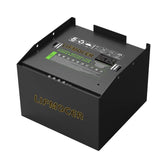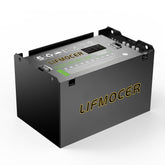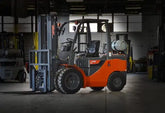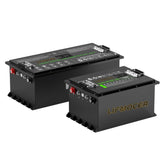How To Use Portable Jump Starter (Full Guide)
Introduction
There are moments when you turn the key and the engine simply doesn't respond — no sound, no start. I've been in that situation, and it's never pleasant, especially when help isn't immediately available. That's why more drivers, including myself, choose to keep a portable jump starter in the car. It provides peace of mind and a simple way to restart a dead battery without depending on another vehicle or roadside service.Next,I'll explain what a portable jump starter is, how it works, how to use it safely, and why it has become an essential tool for everyday drivers.

What Is a Portable Jump Starter?
Definition
A portable jump starter is a compact, self-powered device designed to restart a vehicle when its battery is dead. Unlike traditional jumper cables, which require another running car to provide power, a portable battery jump starter carries its own internal battery. This independence allows drivers to start their vehicles anytime — making it a practical battery jump starter for cars and a reliable source of car emergency power for roadside situations.In simple terms: jumper cables transfer power between two cars, while a car jump starter delivers energy directly from its built-in battery. No second vehicle, no waiting, and no inconvenience.
Types of Portable Jump Starters
Lithium jump starters: The modern and mainstream option — lightweight, compact, and capable of high peak power. Lithium jump starters charge quickly, are easy to store, and are preferred by everyday drivers for convenience and strong performance.
Lead-acid jump starters: Traditional models often used in repair shops, taxis, and fleet vehicles. They are heavier and bulkier but deliver steady output for repeated use. However, most consumers now choose lithium jump starters due to portability and efficiency.
How Do Jump Starters Work?
Once you have a best jump starter in hand, it's helpful to understand how it actually works. At its core, the device relies on a built-in lithium battery that stores electrical energy ready for immediate use. When you connect it to a dead car battery, it releases a sudden surge of high current directly to the starter motor, providing the exact boost needed to get the engine running. Unlike a conventional charger, a best car jump starter is not designed to gradually recharge a battery—it's meant for instant, emergency use.Experts point out in Stack Exchange Q&A that while car starters are great for quickly starting a broken-down car, they cannot repair a completely dead or aging battery. In other words, these devices are your go-to solution for giving your vehicle a quick push back to life, but they are not a fix for long-term battery failure. Understanding this distinction ensures safe and effective use every time you face a roadside battery emergency.
When You Need One
A portable jump starter isn't just for getting your car started—it can be invaluable in a variety of everyday situations. Cold weather, a drained battery, or a vehicle that hasn't been used for a long time can all leave you stranded. With a best car battery jump starter, you don't need another car to help you out; it provides a self-contained boost to get your engine running. Beyond starting vehicles, many jump start battery packs also serve as emergency power sources outdoors, offering built-in lights and the ability to charge electronic devices when your phone, tablet, or other gadgets run out of battery. This combination of convenience and versatility makes it an essential tool for drivers and outdoor enthusiasts alike.

Step-by-Step: How to Use a Portable Jump Starter
Using a portable jump starter is straightforward, but following the correct steps is crucial for safety and effectiveness when you need to jump start a car. Here's a step-by-step guide to get you back on the road:
1. Prepare the Vehicle and Jump Starter – Make sure the car is in park (or neutral for manual transmissions) and the parking brake is engaged. Turn off all accessories like lights, radio, and air conditioning. Take your portable car battery jump starter and ensure it's fully charged before use.
2. Connect the Cables – Identify the positive (+) and negative (-) terminals on your car battery. Attach the red (positive) clamp to the positive terminal first, then attach the black (negative) clamp to a solid, unpainted metal part of the car's engine or chassis away from the battery. This reduces the risk of sparks near the battery.
3. Start the Engine – Power on the jump starter and attempt to start your vehicle. Most modern jump starters deliver a quick, high-current burst sufficient to turn over the engine. If the engine doesn't start after a few seconds, wait a minute and try again. Avoid cranking for more than 5–10 seconds at a time to prevent damage.
4. Disconnect Safely – Once the car starts, turn off the jump starter and remove the clamps in reverse order: black (negative) first, then red (positive). Store the jump starter and cables properly for future use.
5. Additional Safety Tips – Never touch the metal clamps together while the jump starter is powered on. Avoid using a damaged battery or connecting the clamps to the wrong terminals. And remember, a jump starter is meant for emergency use; it can restart a vehicle but cannot revive a completely dead or faulty battery.
Following these steps ensures you can use a jump starter safely, efficiently, and confidently, turning a potentially stressful roadside situation into a simple, manageable task.
Are Jump Starters Safe?
Jump starters are generally very safe when used properly, but following the manufacturer's instructions is essential to avoid accidents. Modern jump starters come with a variety of built-in safety features designed to protect both the user and the vehicle. These include reverse-polarity protection to prevent damage if the clamps are accidentally connected to the wrong terminals, overheat protection to avoid battery or device overheating during repeated use, short-circuit and overcurrent protection to prevent sparks or electrical hazards, and spark suppression systems to reduce the risk of accidental ignition.
Many newer models go a step further with smart clamps that detect proper connections and automatically adjust the current for safe operation. For example, modern lithium jump starters like LIFMOCER include these advanced safety systems, making them highly reliable even for beginners. With these protections in place, drivers can use jump starters not only to restart a dead battery but also as a versatile emergency power source without worrying about mishaps, providing peace of mind in roadside situations or during outdoor activities.

Safety Tips & Common Mistakes
Even with modern protections, using a jump starter pack safely requires attention to a few key tips and common pitfalls. Paying attention to a few key precautions can prevent accidents and ensure the jump starter works effectively when you need it most. Here are some essential safety tips and common mistakes to keep in mind:
- Follow the correct connection order: Attach the red (positive) clamp to the positive terminal first, then the black (negative) clamp to a solid, unpainted metal surface away from the battery.
- Avoid sparks near the battery: Keep the clamps and your hands clear of the battery terminals while connecting and disconnecting.
- Never reverse the clamps: Connecting positive to negative can damage both the vehicle and the jump starter.
- Don't repeatedly attempt to start a damaged battery: If the battery is severely corroded or compromised, multiple attempts can be dangerous and may worsen the damage.
Maintenance & Storage
Proper maintenance is essential to keep your portable jump starter reliable and ready for emergencies. First, make sure to charge the device regularly, even if it hasn't been used in a while. Most manufacturers recommend topping up the battery every 1–3 months to prevent deep discharge, which can shorten battery life. Additionally, perform a quarterly “wake-up” routine: turn on the jump starter, check its charge level, and give it a short top-up if needed. This helps keep the lithium cells active and ensures the device can deliver peak current when required.
Storage also plays a key role in preserving the lifespan of your jump starter. Keep it in a cool, dry place and avoid exposing it to extreme temperatures—high heat can degrade the battery, while freezing cold can temporarily reduce performance or cause damage over time. When storing long-term, protect the device from direct sunlight, moisture, and corrosive substances, and make sure the clamps and cables are clean, dry, and untangled.
Portable Jump Starter Limitations
While portable jump starters are extremely handy for emergency situations, it's important to understand their limitations so you don't rely on them incorrectly. First, they cannot revive a completely dead or damaged battery. If the battery has reached the end of its lifespan or has suffered severe internal damage, no amount of jump-starting will make it functional. Second, a malfunctioning alternator, starter motor, or other components of the vehicle's electrical system can prevent the engine from starting even if the jump starter is fully charged and properly connected. In such cases, repeatedly attempting to start the car with a jump starter won't solve the underlying problem and may even risk damaging the device.
Additionally, if you find yourself needing to use a jump starter frequently, it is a clear indication that the battery or electrical system needs professional inspection. Regular reliance on jump-starting is not a substitute for proper maintenance or repairs. By understanding these limitations, drivers can use car jump starter for car battery safely and effectively, while also recognizing when it's time to address underlying vehicle issues rather than treating the jump starter as a permanent solution.
Conclusion
A portable jump starter is a must-have for any driver, allowing you to quickly jump start a car in emergencies without relying on another vehicle. Modern lithium models, like LIFMOCER, are portable, powerful, and safe with built-in protections. Regular maintenance and proper use ensure reliability, while understanding its limits helps avoid misuse. Keep one in your car, and you'll have peace of mind knowing you're prepared for unexpected battery issues.
FAQ
How long does a jump starter take to charge a car battery?
A portable jump starter does not charge your car battery the way a charger does — it delivers a quick burst of power to start the engine. Once the engine runs, the vehicle's alternator takes over to recharge the battery. So the “charge time” is seconds, not hours.
How do you use a jump box on a dead battery?
Connect the red clamp to the battery's positive terminal, and the black clamp to a metal ground point away from the battery. Power on the jump starter, start the vehicle, then disconnect the clamps in reverse order. If the vehicle doesn't start after a couple of tries, the battery or electrical system may need professional inspection.
Can a portable jump starter start a dead battery?
Yes — as long as the battery still has recoverable power and isn't completely failed. A auto jump starter can give the engine enough current to start even if the battery is weak. However, if the battery is severely damaged or totally dead internally, no jump starter will revive it.
Do you put red or black first on a portable jump starter?
Always connect the red (positive) clamp first. Then attach the black (negative) clamp to a metal ground point. After starting the vehicle, remove the clamps in reverse order — black first, then red.
Related Articles: How To Jump Start A Car Safely And Effectively?





















